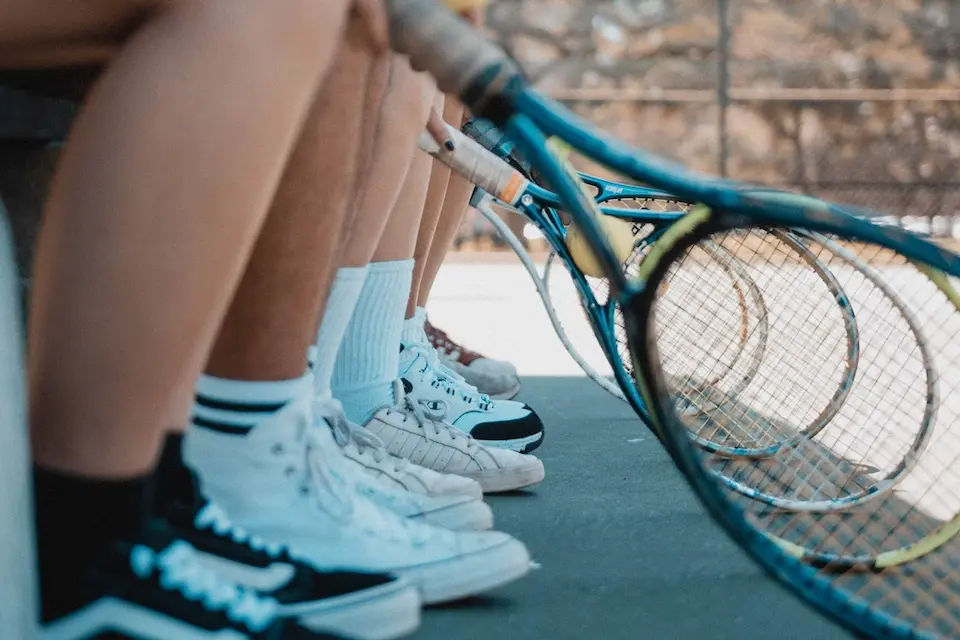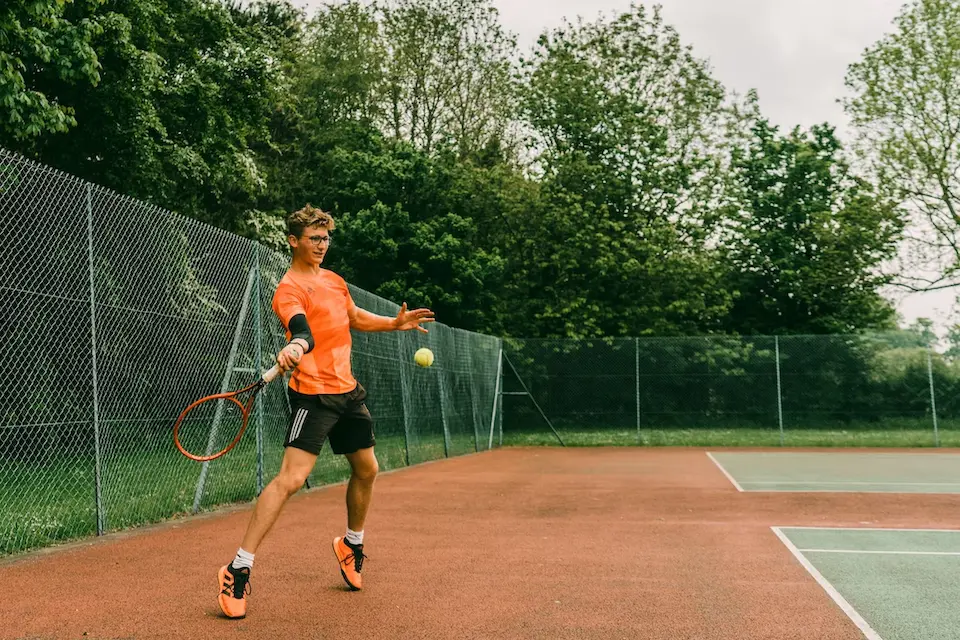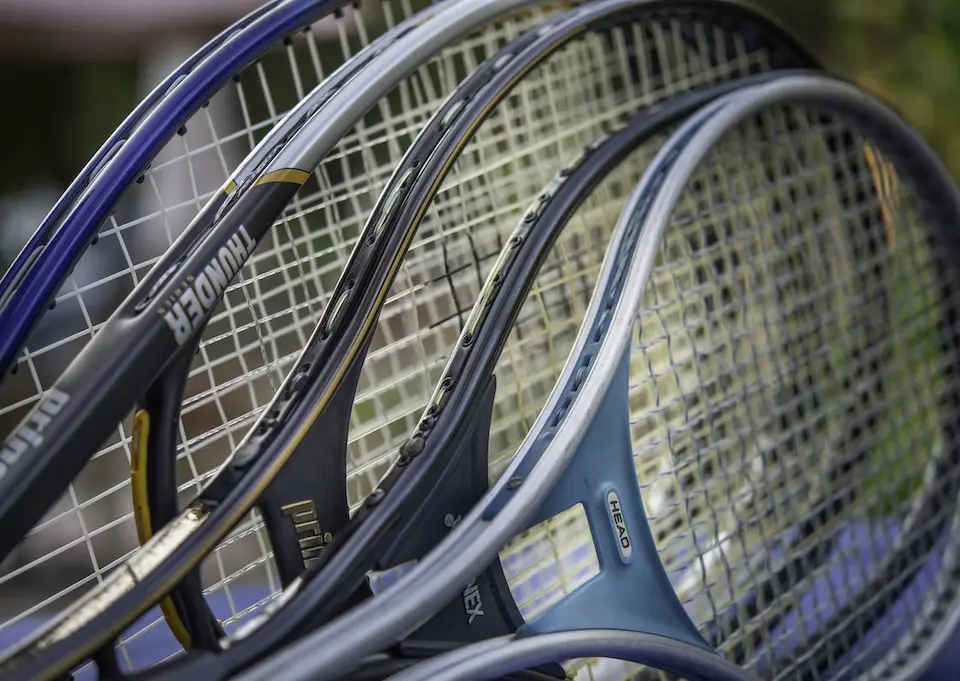
How to Choose A Tennis Racquet For Your Game
When it comes to tennis gear, your tennis racquet is probably the most important item on your list. Choosing the wrong racquet can have a negative impact on your game. Whether you’re a beginner or an intermediate or advanced player, you want to choose a racquet that will enhance your game and improve your skill.
But, how do you know if you’ve chosen the right racquet? There are several factors to keep in mind before you make your purchase. At North State Resurfacing, we’re here to help you find all of the right gear for when you hit the court. We have some factors you’ll want to consider as well as a look at our picks based on a player’s experience.
Factors to Consider When Selecting a Racquet
Your Playing Style
Do you play a lot of singles? or are you more of a doubles player? Zeroing in on what style you play regularly will help you find the right tennis racquet.
If you mainly play singles, you’ll want to look for a racquet that adds topspin to your groundstrokes. If you’re more of a doubles player and like to go to the net, look for a racquet that will give you more control of your volleys.
Your Skill Level
Your skill level can also help you determine the best type of racquet.
Beginner tennis players
Beginners will want to look for racquets with bigger frames that will help with power. Also, you want to make sure you’re comfortable with the racquet and that it’s not too heavy. Beginners should look for a racquet weight of under 11 ounces. A lighter racquet makes it easier to move and can help prevent injury.
Look for racquets with a head size larger than 100 square inches. This will give you a big target to hit the ball with and increase the size of the sweet spot. But you may lose some control. So, you need to decide what is more important as you’re starting out.
Intermediate Players
When you reach the intermediate stage, the best tennis racquet style will be a little heavier and have a smaller head size. Intermediate-level racquets typically have medium head sizes that help to maintain maneuverability.
If you have the strength, you may also want to consider a heavier racquet. This will give you more stability when you hit the ball. At this level, you can also begin experimenting with a more flexible frame and a tighter string pattern.
Advanced Players
Once you reach the advanced level, you have better stamina and more control on the court than those who are just starting out. At this point, you’ll want a heavier racquet and a smaller racquet head. Control racquets and modern player’s racquets are popular at this level.

Your Physical Abilities
Your athletic ability can also determine the type of racquet you purchase. If you have a good deal of strength, you may opt for heavier racquets. Players who are just starting or don’t have as much strength will want to opt for the lighter racquets.
Tennis Racquet Weight
Most beginner racquets are lighter, under 11 ounces when strung. Advanced tennis players often use heavier racquets, over 11 ounces. Look to see if the racquet you’re considering has a strung weight or unstrung weight somewhere on the frame.
A lighter racquet will be easier to swing and maneuver. A heavier racquet will give you more stability but can be tough on your shoulders when serving.
Racquet Balance
When you hear someone mention racquet balance, they’re talking about the racquet length where the weight is split evenly between the hand and the handle. An evenly balanced racquet will have its balance point right in the middle of the length. Balance is measured in millimeters between the butt cap and the balance point. It is measured unstrung.
The balance of a racquet is divided into 3 categories:
- Head heavy is when the center of gravity is shifted slightly towards the tip of the racquet. The balance is greater than 350mm.
- Head light is when the center of gravity shifts slightly towards the racquet handle. The balance is less than 330mm.
- Even is when the weight is evenly distributed with a balance between 330mm and 350mm.
Racquet Head Size and Head Shape

The racquet head size refers to the area where the strings create the face of the racquet. There are 3 different head size measurements:
- Midsize – 85-97 in2 / 550-625 cm2
- Mid-plus – 98-105 in2 / 630-680 cm2
- Oversized – 106-135 in2 / 685-870 cm2
The head size is important because it can impact the power of your game. A ball sinking into a larger racquet head will have a greater rebound effect leading to more powerful shots. A larger racquet head also has a larger hitting area and a bigger sweet spot. These can be more forgiving if your shot is off-center but can be harder to maneuver and result in less control. Larger head sizes
Racquet Length
The racquet length is measured from the butt of the handle to the tip of the head. It can range between 27 and 29 inches, with 27 being the most common.
A longer racquet will give you a bigger reach and allow you to hit the ball further, but they’re usually harder to maneuver. Net volleys and shots closer to the body can be more difficult with a longer frame.
Racquet String Pattern
Many beginners don’t pay much attention to the string pattern, but it’s important because it can have a great impact on overall performance. String patterns can be open or closed.
Open string patterns will have a greater ball rebound and higher launch angle as they deflect more on impact. Players using these types of racquets should find easier access to depth and pace. The increase in string movement can lead to more abrasion which can result in strings breaking faster.
Playing tennis with a closed string pattern will result in fewer rebounds. These types of racquets won’t deflect much upon ball impact. While there isn’t much string movement for spin generation, these racquets tend to allow players to swing quickly, which can result in the ball spinning quickly. Closely spaced strings can also last longer which is a plus.
Flexible or Stiffer Racquet
When shopping for tennis racquets, also look at the flexibility. A flexible racquet can give more control and comfort but absorbs more power. A stiffer racquet has less control but doesn’t deflect as much on impact, resulting in more power. It’s generally not as comfortable because it delivers stronger shocks to the arms.
Stiffness is measured with the RA method. This looks at how flexible a tennis racquet is when the static force is applied at one point of the racquet.
The RA index ranges from 55 to 75 with the following categories:
- 55-60 low stiffness
- 61-65 medium stiffness
- 66-70 rather stiff
- 71-75 very stiff
It’s important to note that the RA index refers to a static measurement at a certain point of the racquet. It doesn’t refer to the overall racquet stiffness.
Our Selections For Different Players Styles and Experience
Now that you know what factors to look for when shopping for the perfect racquet, let’s take a look at some of our picks for the best racquets.
Tennis racquets are generally broken down into three groups based on different playing styles and needs:
- Power/Game Improvement Racquets
- Tweener Racquets
- Player’s Racquets
Power Racquets/Game Improvement Racquets
These racquets are often geared toward beginners and those looking to improve their game. They feature oversized heads with a larger sweet spot. They are also longer for extra reach and lighter for easier swinging.
The Babolat Pure Drive is a favorite in this category. It provides power and precision and is available in lightweight and oversized versions.
The Wilson Ultra is another one to check out. This can be the perfect racquet for beginner and intermediate players, as it comes in different versions. It is a lighter alternative for players who want more arm-friendly playability without losing the ability to hit with pace and depth.
Tweener Racquets
Tweener racquets are popular because they combine attributes of the power racquets and the player’s racquets. A tweener racquet provides the swing speed of the power racquet while offering better control and spin from the player’s racquet. These often appeal to advanced junior players who may not have the strength to handle heavier racquets like player’s racquets but want a racquet size that will allow them to work on their skills.
Tweener racquets have a mid-plus head size, an open string pattern, and middle-of-the-road balance from slightly head heavy to slightly head-light.
Favorites in this category include the Head Auxetic Boom MP Tennis racquet for its new racquet shape and the Babolat Pure Strike 103 Tennis Racquet for its ability to provide controlled strokes.
Player’s Racquets
Player’s Racquets are split into two categories, modern player’s racquets, and traditional player’s racquets.
The modern player’s racquet offers a heavy topspin, big power, and long strokes. They are thought of as heavier tweener racquets and have the same mid plus head sizes, and open string patterns.
The traditional player’s racquet is saved for elite players with versatile games. They are best for players who need control from their frame and bring their own power. They feature small head sizes and a tighter string pattern.
Some racquets to consider here are the Babolat Pure Aero for its ability to generate topspin and the Wilson ProStaff 97 v13 because it has an arm-friendly swing weight and a denser string bed for excellent precision.
Shop North State For All Your Tennis Racquet Needs
When you’re shopping for a quality tennis racquet, look no further than North State Resurfacing. We are your source for tennis racquets and all of the gear you need to have the best game. Beginner and advanced players know they can trust North State Resurfacing to deliver. Check out our wide selection of tennis racquets and other accessories online or call us at (919) 365-7500 for more information.
